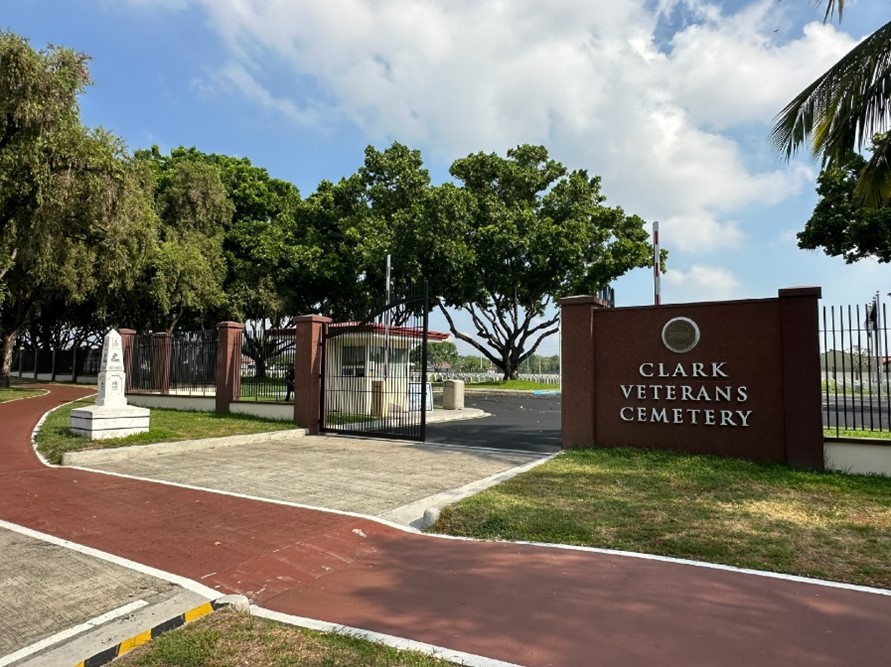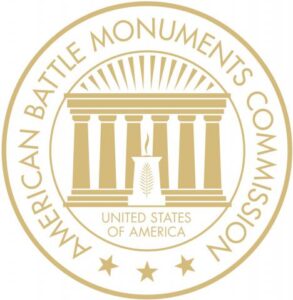Clark Veterans Cemetery is located north of Angeles City in the Republic of the Philippines. In January 2013, President Barack Obama signed into law the Dignified Burial and Other Veterans’ Benefits Improvement Act (Public Law 112-260) directing the American Battle Monuments Commission to operate and maintain Clark Veterans Cemetery following an agreement between the Republic of the Philippines and the United States.
One of two ABMC cemeteries that accepts burial
Clark Veterans Cemetery is one of two ABMC cemeteries – with Corozal American Cemetery – that still accepts the burial of eligible U.S. veterans. To qualify for burial, family members must present the veteran’s honorable discharge or retirement papers, along with other required government documents.
Based on burial forecasts, the cemetery is expected to reach full capacity within the next 80 years. So far, approximately 9,000 service members are buried at this site.

The cemetery name through time
When ABMC took over the site in 2013, the name “Clark Veterans Cemetery” had already been in use for more than a decade. However, there is no clear historical record regarding the cemetery’s official name.
In 1948, the site was referred to as a “base cemetery” due to its location near the former Fort Stotsenburg, which was later renamed Clark Air Base. The cemetery was built to consolidate burials from other post cemeteries in the Philippines and became an active cemetery under the care of the United States Air Force. From 1949 to 1992, locals, residents and service members interchangeably referred the cemetery—located near the main gate of the air base—by various names such as “Clark Cemetery,” “Air Base Cemetery” or “Clark Air Base Cemetery.” However, the term “veterans cemetery” was not used during this period.
It was only in 1992, after the U.S. Air Force left the entire Clark Air Base due to the eruption of Mount Pinatubo, when local veterans stepped in to manage and supervise the site, that it began to be consistently referred to as “Clark Veterans Cemetery.” Since then, burials at the site have primarily been of U.S. veterans who chose to be interred there.

Half of the burials are from the 20th century
In addition to honoring service members who served during the world wars, burials at Clark Veterans Cemetery span from the late 19th century to the present. However, roughly half of those interred here are from the 20th century, primarily Americans deployed during the early years of the United States’ imperial presence in the Philippines.
Some of the examples are U.S. service members who served in the Far East.

American civilians who were sent as part of the so-called “civilizing mission,” particularly in the fields of education, justice and governance are also buried at Clark Veterans Cemetery.
- Judge Lyman Judy Carlock – Served as a judge in Cebu, Philippines
- Tibbits sisters – American teachers in the newly introduced public education
- Amzi Kelly – Lawyer and civil servant

Foreign nationals in service to the U.S. armed forces
Clark Veterans Cemetery is also the final resting place of foreign nationals who served under the U.S. armed forces. In the early 20th century, as the U.S. expanded its presence in Asia, it enlisted foreign nationals to support its efforts. The U.S. Navy enlisted Chinese nationals to serve in Asia, while the U.S. Army recruited Filipinos who would go on to form the Philippine Scouts.

Religious symbols present on headstones
As an active cemetery, Clark Veterans Cemetery accepts the interment of eligible U.S. veterans, prepares the grave plot, and requests a headstone through the Department of Veterans Affairs – the headstones are not the usual ones used in ABMC cemeteries. The cemetery uses upright marble headstones inscribed with the following: a chosen religious symbol (if applicable), name, rank, military unit and service branch, campaigns involved in, and dates of birth and death.
The veteran’s family may choose a religious symbol that reflects the veteran’s faith, based on the list approved by the Department of Veterans Affairs. Although most headstones feature a Christian cross, other emblems representing a variety of religions can also be found at Clark Veterans Cemetery.

The American Battle Monuments Commission sites are a constant reminder of Gen. John J. Pershing’s promise that, “time will not dim the glory of their deeds.”
 An official website of the United States government. Here's how you know.
An official website of the United States government. Here's how you know. 